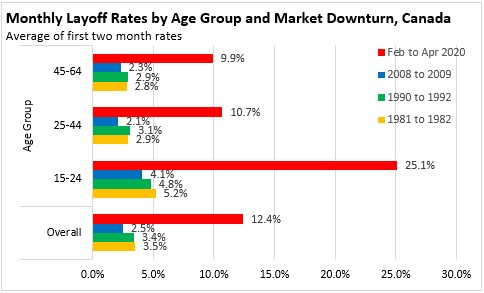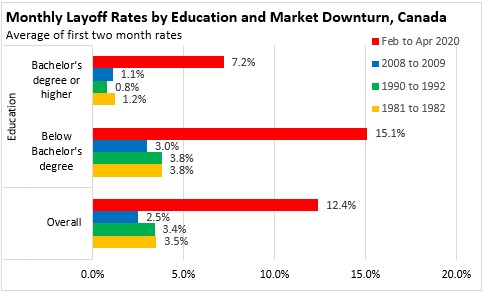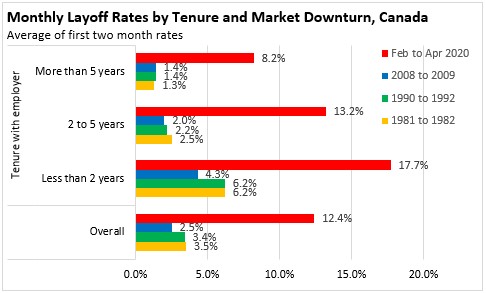The Economics and Statistics Division maintains archives of previous publications for accountability purposes, but makes no updates to keep these documents current with the latest data revisions from Statistics Canada. As a result, information in older documents may not be accurate. Please exercise caution when referring to older documents. For the latest information and historical data, please contact the individual listed to the right.
<--- Return to Archive
For additional information relating to this article, please contact:
June 10, 2020STUDY: COVID-19 AND JOB DISPLACEMENT - THINKING ABOUT THE LONGER TERM Statistics Canada has released a study of job displacements which provides insights on the potential long-term labour market impacts of COVID-19. Recent layoff rates are compared to rates from previous labour market downturns to give a historical perspective.

12.4 percent of Canadian paid workers aged 15 to 64 have been laid-off on a monthly basis since February 2020, while monthly layoff rates during the first two months following previous labour market downturns varied between 2.5 percent and 3.5 per cent.
Young workers, less educated workers, and recently hired workers were more likely to be laid-off than other employees during the last three recessions (1981-1982, 1990-1992 and 2008-2009). Layoff rates since February 2020 have also been higher among these groups.


The study also found that approximately 45 per cent of all laid-off workers were permanently laid-off during the last three recessions. Among those temporarily laid-off, 15 per cent lost their job the following year. In addition, from the late 1970s to the early 2010s at least one in five permanently laid-off workers saw their real earnings down 25 per cent five years after the job loss.
The study notes uncertainties in how the pandemic will affect workers in the long-term, including the outlook on consumption expenditures, exports and firm investments. It should also be noted that historical patterns may not be good indicators of future labour market conditions, with the causes of the current labour market downturn being much different than the causes of previous labour market downturns.
Source: Statistics Canada. COVID-19 and job displacement: Thinking about the longer term
<--- Return to Archive